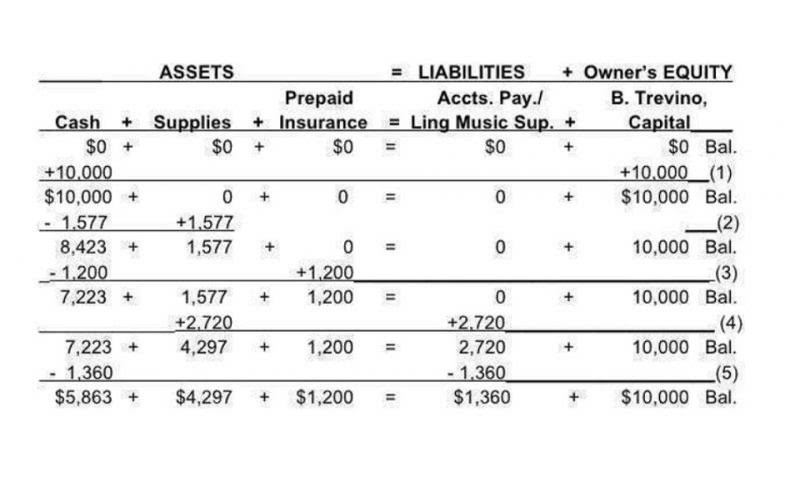

In many instances, the articles of partnership allow withdrawals on a regular periodic basis as a reward for ownership or as compensation for work done in the business. Often such distributions are recorded initially in a separate drawing account that is closed into the individual partner’s capital account at year-end. Assume, for illustration purposes, that James and Joyce take out $1,200 and $1,500, respectively, from their business. Any individual who leaves the partnership will receive cash or other assets equal to that partner’s current capital balance after including an appropriate share of any adjustment indicated by the previous valuation. The allocation of unrecorded gains and losses is based on the normal profit and loss ratio. In conclusion, mastering the basics of partnership accounting is vital for the successful management of a partnership.
Client Relationships
Addressing these disagreements promptly is essential to maintain stability and trust among partners. Clear documentation and open communication serve as primary tools for resolution. It is advisable to reference the partnership agreement, which should specify procedures for dispute resolution and profit allocation. The agreement defines how financial data should be maintained, influencing the preparation of key financial statements and reports. It provides guidance on valuation methods for assets and liabilities, thereby shaping accurate and transparent accounting practices. Clear procedures in partnership accounting facilitate an orderly termination process, reducing potential conflicts and ensuring legal compliance.
Partnerships: Advantages and Accounting
- Accounting firm partnerships offer shared expertise and knowledge, as well as increased financial resources.
- Effective partnership accounting also requires adherence to statutory regulations, including tax laws and legal reporting mandates.
- If a retiring partner withdraws cash or other assets equal to the credit balance of his capital account, the transaction will have no effect on the capital of the remaining partners.
- This certification is essential and demonstrates proficiency in core accounting principles and practices.
- They must also possess strong relationship skills and be able to develop and execute effective strategies to drive the success of the firm.
- By carefully navigating these aspects, partners guide the firm through steady growth and success.
- It will also show the contributions and withdrawals made by each partner.
Some agreements also consider the capital invested in the business as an element that should be recognized within the allocation process. James and Joyce have contributed a total of $80,000 in identifiable assets to their partnership and have decided on equal capital balances. According to the bonus method, this agreement is fulfilled simply by splitting the $80,000 capital evenly between the two partners. The bonus method assumes that a specialization such as Joyce’s artistic abilities does not constitute a recordable partnership asset with a measurable cost. Hence, this partnership accounting approach recognizes only the assets that are physically transferred to the business (such as cash, patents, and inventory). In forming a partnership, the contributions made by one or more of the partners may go beyond assets and liabilities.
Time Management and Work-Life Balance
The capital account will be reduced by the amount of drawing made by the partner during the accounting period. If goodwill is to be retained in the partnership and therefore continue to be recognised as an asset in the partnership accounts, then no further entries are required. The purpose of this article is to assist candidates to develop their understanding of the topic of accounting for partnerships. As such, it covers all of the learning outcomes in Section H of the detailed Study Guide for FA2.

What are the benefits of forming an accounting firm partnership?
- And unlike some other types of partnership, you can have liability protection from other members’ actions (depending on your state).
- They analyze complex data, weigh the pros and cons, and make informed choices that align with the firm’s goals.
- A partnership agreement between partners covers their rights and responsibilities while protecting the limited partner’s contributions.
- Overall, compliance, auditing, and transparency are integral to the long-term stability and credibility of a partnership.
- There may be a nominating committee for executive committee positions and the managing partner role.
- The articles of partnership agreement specifies that Evers will be allotted 40 percent of all profits and losses because of previous business experience.
It involves maintaining accurate records of capital contributions, profit-sharing arrangements, and financial transactions. By adhering to these principles, partnerships can ensure financial clarity and foster collaborative business growth, benefiting all partners involved. This involves calculating the total income generated by the partnership and allocating it to each Bookkeeping for Startups partner based on the agreed-upon sharing ratio. This ratio can be equal or vary based on the partners’ contributions or roles within the business.

At Shajani income summary CPA, we understand the unique challenges that partnerships face and are dedicated to helping partnerships thrive. Our team of experienced accountants and advisors specializes in financial statement preparation, tax planning, and advisory services tailored to meet the specific needs of your partnership. By partnering with Shajani CPA, you can ensure that your financial records are accurate, your tax liabilities are minimized, and your partnership complies with all relevant regulations.
- An example of partnership accounting would be two friends starting a business together, where they both invest equal amounts of money and share the profits and losses based on their agreed upon partnership agreement.
- Goldman also may be contributing some attribute other than tangible assets to this partnership.
- This is a debit entry for the value of the goodwill in the goodwill account.
- Building a recognizable personal brand involves establishing a reputation based on expertise, integrity, and leadership.
A. Ensures Transparency and Fairness

A limited liability limited partnership (LLLP) combines aspects of LPs and LLPs. Effective partnership accounting also requires adherence to statutory regulations, including tax laws and legal reporting mandates. Non-compliance can result in penalties, legal disputes, and reputational damage. Therefore, establishing robust internal controls and regularly updating accounting practices are vital in maintaining high standards of compliance and transparency. Ensuring compliance with relevant partnership laws and accounting standards is fundamental in partnership accounting. Regular audits verify the accuracy of financial statements, promote accountability, and detect potential discrepancies or irregularities.
TAX PRACTICE MANAGEMENT

One or more partners can choose to sell their portion of the business to an outside party. This type of transaction is most common in operations that rely primarily on monetary capital rather than on the business expertise of the partners. Regardless of the nature or the frequency of the event, any alteration in the specific individuals composing a partnership automatically leads to legal dissolution. In many instances, the breakup is merely a prerequisite to the formation of a new partnership. For example, if Abernethy and Chapman decide to allow Miller to become a partner in their business, the legally recognized partnership of Abernethy and Chapman has to be dissolved first. Refer Example 1 and assume that Eris brings in cash worth $40 million but in return it gets a capital share of only $25 million.
Recording and Managing Partnership Contributions and Withdrawals
In general, equity partners receive a larger share of the profits than non-equity partners. Equity partners have a stake in the firm and share in its profits and losses. Non-equity partners, on the other hand, receive a fixed salary and may be eligible for bonuses based on their performance. Effective time management is vital for partners who juggle numerous responsibilities daily.

